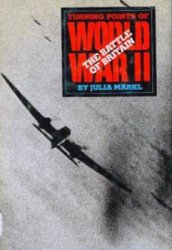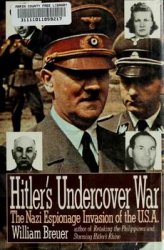The reality in the post–World War II Soviet Union and
in Eastern Europe was somewhat different. Under Stalin,
the Soviet cultural scene was a wasteland. Beginning in
1946, a series of government decrees made all forms of literary
and scientific expression dependent on the state.
All Soviet culture was expected to follow the party line.
Historians, philosophers, and social scientists all grew accustomed
to quoting Marx, Lenin, and above all, Stalin
as their chief authorities. Novels and plays, too, were supposed
to portray Communist heroes and their efforts to
create a better society. No criticism of existing social
conditions was permitted. Even distinguished composers
such as Dmitri Shostakovich were compelled to heed
Stalin’s criticisms, including his view that contemporary
Western music was nothing but a “mishmash.” Some areas
of intellectual activity were virtually abolished; the
science of genetics disappeared, and few movies were
made during Stalin’s final years.
Stalin’s death brought a modest respite from cultural
repression. Writers and artists banned during Stalin’s
years were again allowed to publish. Still, Soviet authorities,
including Khrushchev, were reluctant to allow cultural
freedom to move far beyond official Soviet ideology.
These restrictions, however, did not prevent the emergence
of some significant Soviet literature, although au-
thors paid a heavy price if they alienated the Soviet authorities.
Boris Pasternak (1890 –1960), who began his
literary career as a poet, won the Nobel Prize in 1958 for
his celebrated novel Doctor Zhivago, published in Italy in
1957. But the Soviet government condemned Pasternak’s
anti-Soviet tendencies, banned the novel from the Soviet
Union, and would not allow him to accept the prize. The
author had alienated the authorities by describing a society
scarred by the excesses of Bolshevik revolutionary zeal.
Alexander Solzhenitsyn (b. 1918) caused an even
greater furor than Pasternak. Solzhenitsyn had spent
eight years in forced-labor camps for criticizing Stalin,
and his One Day in the Life of Ivan Denisovich, which won
him the Nobel Prize in 1970, was an account of life in
those camps (see the box on p. 168). Later, Solzhenitsyn
wrote The Gulag Archipelago, a detailed indictment of the
whole system of Soviet oppression. Soviet authorities denounced
Solzhenitsyn’s efforts to inform the world of Soviet
crimes against humanity and arrested and expelled
him from the Soviet Union after he published The Gulag
Archipelago abroad in 1973.
Exile abroad rather than imprisonment in forced-labor
camps was perhaps a sign of modest progress. But even the
limited freedom that had arisen during the Khrushchev
years was rejected after his removal from power. Cultural
controls were reimposed, destalinization was halted, and
authors were again sent to labor camps for expressing outlawed
ideas. These restrictive policies continued until the
late 1980s.
In the Eastern European satellites, cultural freedom
varied considerably from country to country. In Poland,
intellectuals had access to Western publications as well as
greater freedom to travel to the West. Hungarian and Yugoslav
Communists, too, tolerated a certain level of intellectual
activity that was not liked but not prohibited.
Elsewhere, intellectuals were forced to conform to the regime’s
demands. After the Soviet invasion of Czechoslovakia
in 1968, Czech Communists pursued a policy of
strict cultural control.
The socialist camp also experienced the many facets of
modern popular culture. By the early 1970s, there were
28 million television sets in the Soviet Union, although
state authorities controlled the content of the programs
that the Soviet people watched. Tourism, too, made inroads
into the Communist world as state-run industries
provided vacation time and governments facilitated the
establishment of resorts for workers on the coasts of the
Black Sea and the Adriatic. In Poland, the number of
vacationers who used holiday retreats increased from
700,000 in 1960 to 2.8 million in 1972.
Spectator sports became a large industry and were also
highly politicized as the result of Cold War divisions. Victory
in international athletic events was viewed as proof
of the superiority of the socialist system over its capitalist
rival. Accordingly, the state provided money for the construction
of gymnasiums and training camps and portrayed
athletes as superheroes.




 World History
World History









